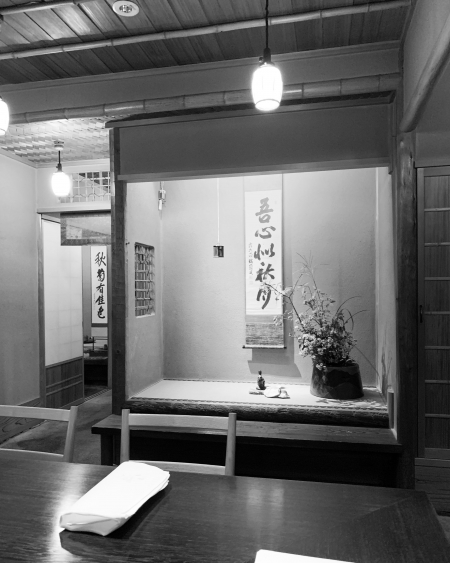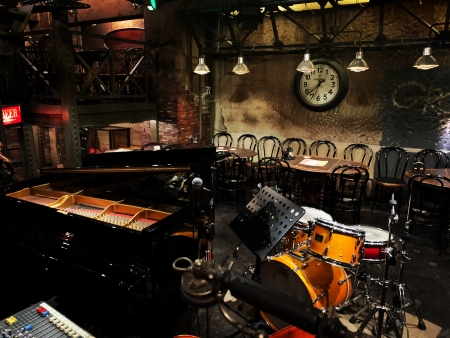気分と建築計画
複雑で雑多なものが存在していて、漂っていて、それが普通にあって、その中から、あとはどこにフォーカスをするか、そうすると、それがクローズアップされて、メインになり、ただ、次の瞬間、また違うものにフォーカスし、今度はそれがクローズアップされる、それは決して、整理整頓されてはおらず、思いつきや気分で変わる、それが日常の生活だと思う。
だから、日常に、生活に、そこに携わる人を建築に引き込むために「気分」を扱う。
「気分」をどうしたら建築として掴むことができるのだろうかと、ずっと考えている。
これが小物だったら、器だったら、カップだったら、服だったら、と考えると、気分によって選択すればよく、良し悪しは別として、それで「気分」を掴むことができる。
では、建築も同じように、変えれば良い、場所を変えれば良い、となるが、家は、たくさんあちこちに家がある人、別宅がある人、ならば良いが、あるいは、都市の中に居場所を気分で見立てれば良いかもしれないが、それはちょっとしんどい、行き着く先は定住したくなるし、それは安全地帯が欲しくなるから。
ならば、ひとつの場所で、「気分」という掴み所がなく、複雑で、雑多で、得体の知れない、変わりやすいことが反映された、「気分」を掴む、あるいは、「気分」を誘発する建築をつくりたいと思っている。
ただ、そうすると、相容れないのが建築計画になる。
建築計画とは大雑把に言えば、効率性や経済性を求めている。建築には多額の資金が必要だから、事業性が大事になり、その事業性を担保するには効率性や経済性が不可欠だ。「気分」は効率性や経済性の範疇には入ってこない。
どうやって折り合いをつけるかと考えている。
いや、もしかしたら、折り合いをつけようとしている時点で無理があるのかもしれない。
そもそも、「気分」を建築に引き込もうとしているのに、それが建築計画とは折り合いが悪いとはわかっているのに、尚も、建築計画にこだわる、効率性や経済性にこだわる、手放さないのがおかしいのかもしれない。
なかなか、今までの積み重ねがあるから、手放せない。
ただ、考えてもみたら、複雑で雑多なものが存在していて、漂っていて、それが普通にあって、整理整頓されていない状態を日常の生活の中で許容できるものなんて、建築くらい大きなスケールがないとできないことだから、整理整頓などして単純化してしまうのは勿体ないし、自ら建築の可能性を捨てているようなものだろうと考えて、どうするかな、となる。
"Mood and architectural plan"
There is a complex and miscellaneous thing, drifting, it is normal, and from there, the focus is the rest, and then it closes up and becomes the main, just the next At the moment, I focus on something different, and this time it is close-up, it is never organized, I think that it is a daily life that changes with thoughts and moods.
Therefore, we treat "mood" in order to draw people involved in daily life into daily life.
I've always wondered how I can grasp "feeling" as architecture.
If this is an accessory, a bowl, a cup, or a clothes, you can select it according to your mood, and whether it is good or bad, you can get a feeling.
In the same way, you can change the architecture in the same way, you can change the place, but if you have a lot of homes, people with separate homes, or a place in the city It might be a little tricky, but it's a bit tedious, because you want to settle down where you want to go, and you want a safety zone.
Then, in one place, there is no place of "mood", and it is complicated, miscellaneous, unfamiliar and variable, reflecting "moe" or triggering "moe" I want to make architecture.
However, if you do so, what is incompatible is the architectural plan.
Roughly speaking, an architectural plan calls for efficiency and economy. Since a large amount of money is required for construction, business efficiency is important, and efficiency and economic efficiency are indispensable to secure the business efficiency. "Mood" does not fall into the category of efficiency and economy.
I'm thinking about how to come to terms.
No, maybe it may be impossible when trying to make a compromise.
In the first place, we are trying to bring "feeling" into architecture, but we know that it is not well-balanced with the architectural plan, but still stick to the architectural plan. It may be strange.
It 's hard to let go because there 's a lot to date.
However, if you think about it, it is as big as architecture that something complex and miscellaneous exists, drifts, is normal, and can tolerate an unorganized state in everyday life. Since it is impossible to do without a scale, there is no need to simplify things by organizing them, and it will be a matter of thinking that it is like throwing away the possibilities of architecture.


